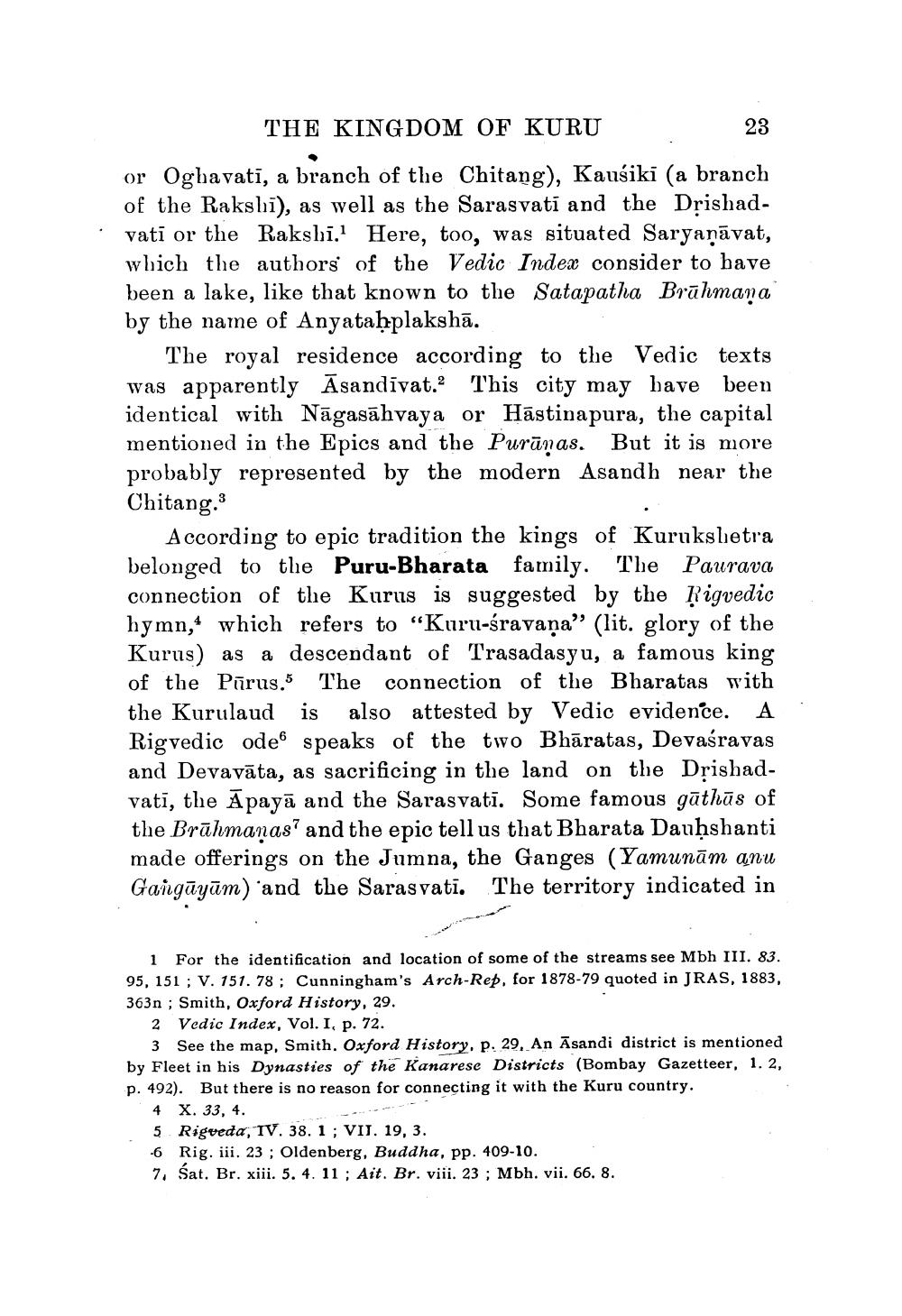________________
THE KINGDOM OF KURU
23
or Oghavatī, a branch of the Chitang), Kausiki (a branch of the Rakslī), as well as the Sarasvati and the Drishadvati or the Rakshī. Here, too, was situated Saryaņāvat, which the authors of the Vedic Index consider to have been a lake, like that known to the Satapatha Brūhmana by the name of Anyataḥplakshā.
The royal residence according to the Vedic texts was apparently Āsandivat. This city may have been identical with Nāgasāhvaya or Hastinapura, the capital mentioned in the Epics and the Purūnas. But it is more probably represented by the modern Asandh near the Chitang 3
According to epic tradition the kings of Kurukshetra belonged to the Puru-Bharata family. The Paurava connection of the Kurus is suggested by the ßigvedic hymn, which refers to "Kuru-śravana” (lit. glory of the Kurus) as a descendant of Trasadasyu, a famous king of the Pūrus. The connection of the Bharatas with the Kurulaud is also attested by Vedic evidence. A Rigvedic ode speaks of the two Bhāratas, Devaśravas and Devavāta, as sacrificing in the land on the Drishadvatī, the Āpayā and the Sarasvati. Some famous gūthūs of the Brāhmaṇas? and the epic tell us that Bharata Dauḥshanti made offerings on the Jumna, the Ganges (Yamunām anu Gangāyām) and the Sarasvati. The territory indicated in
1 For the identification and location of some of the streams See Mbh III. 83. 95, 151 ; V. 151. 78 ; Cunningham's Arch-Rep. for 1878-79 quoted in JRAS, 1883, 363n ; Smith, Oxford History, 29.
2 Vedic Index, Vol. I, p. 72.
3 See the map, Smith. Oxford History, p. 29. An Āsandi district is mentioned by Fleet in his Dynasties of the Kanarese Districts (Bombay Gazetteer, 1.2, p. 492). But there is no reason for connecting it with the Kuru country.
4 X. 33, 4. 5 Rigveda, IV. 38. 1 ; VIJ. 19, 3. -6 Rig. iii. 23 ; Oldenberg, Buddha, pp. 409-10. 7. Sat. Br. xiii. 5. 4. 11; Ait. Br. viii. 23 ; Mbh. vii. 66. 8.




